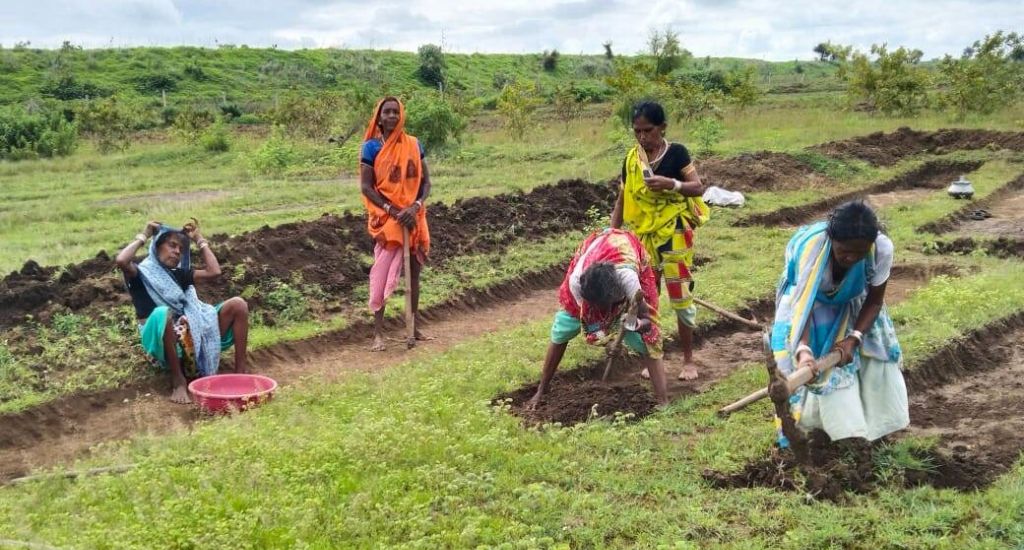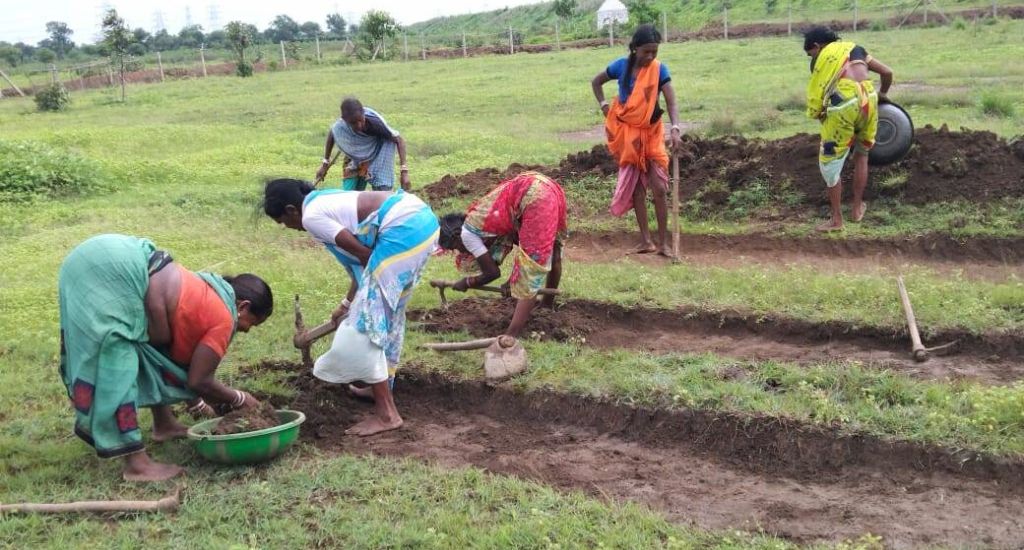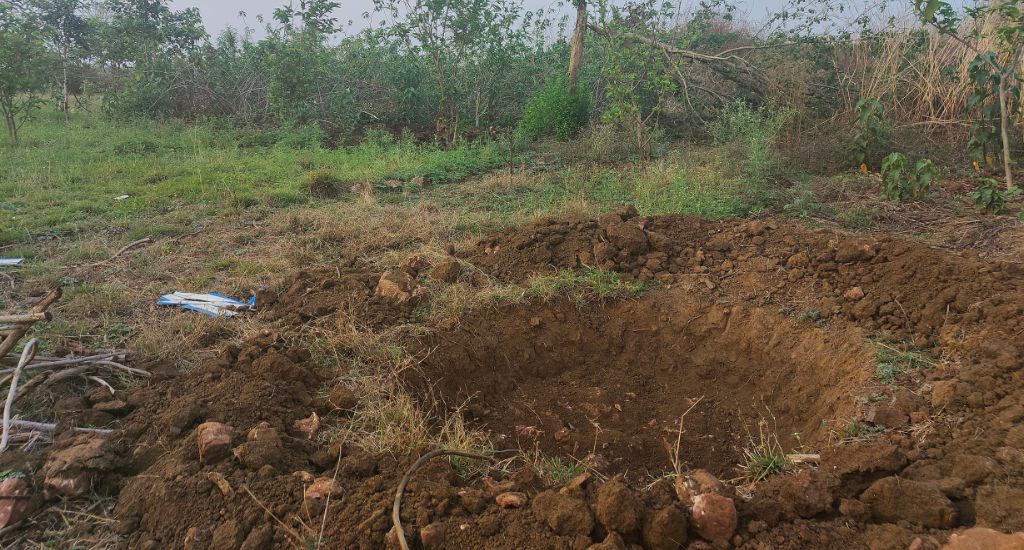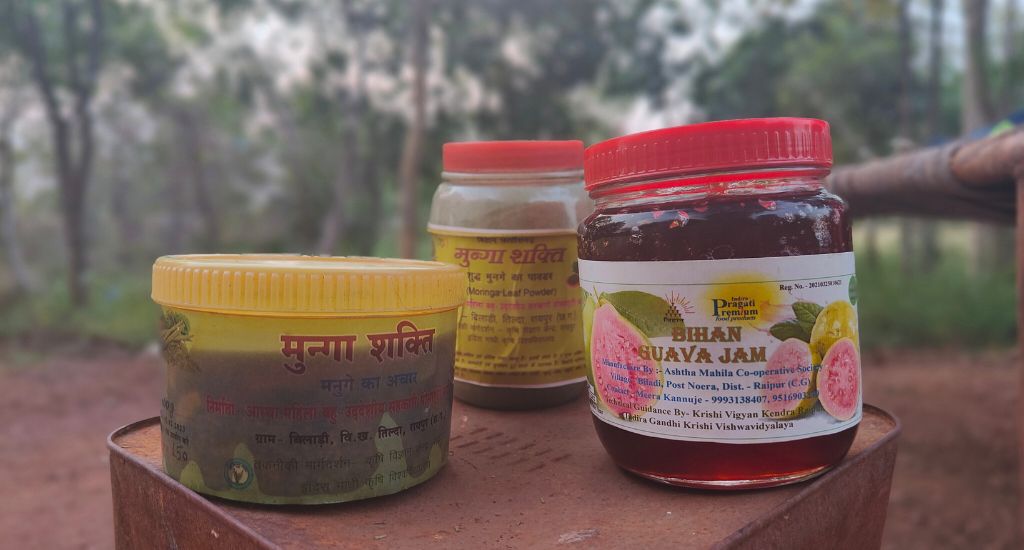
Turning fallow land fertile, Chhattisgarh women reap rich harvest
Women of Biladi grow fruits and vegetables on land they had collectively leased from panchayat to earn a decent living in a region that was historically arid.

Women of Biladi grow fruits and vegetables on land they had collectively leased from panchayat to earn a decent living in a region that was historically arid.
It is 6 in the morning and the sky is filled with the first streak of morning light. Urmila Dhru, in her early sixties, has already set out for work after completing her household chores.
Her routine has largely remained unchanged since the past 30 years when she alongside 19 other women took a 15-acre plot of land on lease from their village panchayat to cultivate crops.
The land had no water source and little grew on it.
But three decades later, Urmila and her fellow women farmers have transformed the patch of land into a veritable green oasis amid an arid stretch. Toiling hard daily from dawn to dusk, they have rejuvenated the soil, revived the water table, and grown fruits and vegetables on it.
The produce the land bears now is enough to feed the families of the women. They earn some money from it as well.

The transformation brought out by the women has been truly remarkable. Inhabitants of Biladi, some 40m from Raipur in Chhattisgarh, faced a bleak future. Lack of irrigation in the region meant little or no farming. Men routinely migrated outside in search of work while the women left behind perpetually lived a life of penury without the slightest hope of better prospects.
But then the women took the initiative and rewrote their own destinies.
“Back then, there were no employment opportunities. Some of us owned land but this area is extremely arid. There was no revenue from our small land holdings,” pointed out Urmila.
We did not have any skills, but we knew a thing or two about growing food.
Then the idea hit that they could attempt to do something collectively. “We decided to get together and farm as a community,” she added.
Thereafter, 20 women, Urmila included, belonging to both Dalit and tribal communities, approached the gram panchayat and asked them for a piece of land. They were granted 15 acres of land on lease through a resolution passed in the gram sabha.
“We did not have any skills, but we knew a thing or two about growing food. After all, as women, we are always worried about our children going to bed hungry,” pointed out Kuanr Pal, 72.
In 1991, the women registered themselves as the Biladi Mahila Mandal. “We started with cultivating millets and selling them at 10 paise per kilo,” recollected Kuanr.
Over the years, the prices their produce fetched have increased. So has their business.
Now in their sixties and seventies, the women have been joined by their grandchildren. “Today, we sit back and look at our younger ones making jams from the fruits grown and making handsome profits,” said Urmila.

Starting with millets, the collective today grows 20 different kinds of herbs, shrubs, vegetables, and fruits on the land.
“The soil required a lot of work. Because millets are climate resilient and do not require a lot of water, it was the best option for the initial years. But eventually, we started bringing in other crops and opted for multi-cropping to make the soil adaptable and fertile,” another member of the group, Mantora Nisad said.
“We also made sure that no fertiliser was used on the land and all the produce was natural. We make our own compost and use traditional methods of pest control like neem,” Nisad added.
Simultaneously, they also worked on reviving the water table. Maintaining water capacity at the farm was always their biggest challenge “To bind the soil better, we started planting trees. At the same time, we also experimented with various low-cost mechanisms to harvest rainwater,” Urmila said.
Water trenches currently wind through the land. The once-arid land also has medium-sized soak pits for rainwater harvesting, dug by the women themselves.
The farm never runs out of water now. And each woman has their task cut out, from tilling the land to sowing seeds and making compost.

“Since the land belongs to the panchayat, every work carried out on is done under MGNREGA. For this, the women also earn wages. This helps them financially too,” explained Savita Patil.
Patil is among the many younger ones who have joined their grandmothers to give a helping hand.
That more are joining the women’s collective has benefits. They are helping in making value-added products like jams and pickles and contributing to the revenue earned.
Last year, the earnings from jams and pickles alone were to the tune of some Rs 2 lakhs. The extra income, for all practical purposes, is the icing on the cake for the women toiling hard on a land that was once fallow but is now remarkably fertile.
The lead image at the top shows Biladi women farmers working on the land (Photo by Aishwarya Mohanty)
Aishwarya Mohanty is an independent journalist based in Odisha. She reports on the intersection of gender, social justice, rural issues and the environment. She is also a Rural Media Fellow powered by Youth Hub.